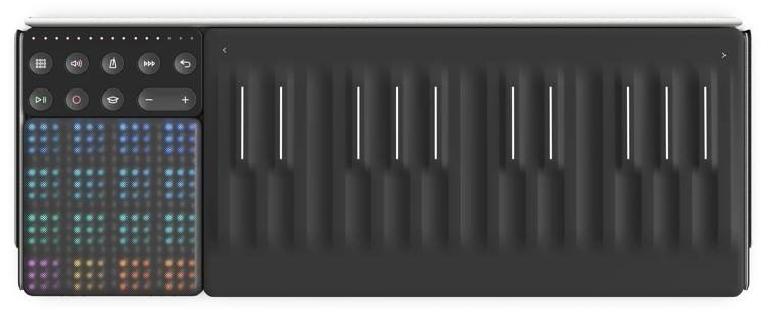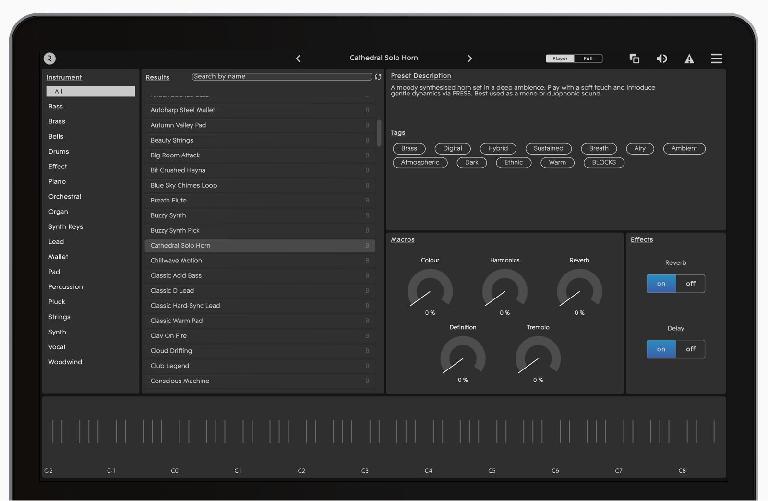ROLI shows no signs of slowing down on the production and development of its Blocks environment. With an updated Lightpad M and the introduction of the Seaboard Block, it’s a good time to get into making music on iOS and desktop with ROLI instruments. The Songmaker Kit puts 3 specific blocks together with a portable package that gives streamlined functionality when it’s all connected. I took it for a spin and here’s what I found.
What’s In The Kit
The kit itself consists of a Seaboard block, a Lightpad M block and a Loop block. The Seaboard block is a 24-note slimmed down version of the Seaboard that is about the size of a paperback book. X/Y pad and macro sliders are eschewed for more keys and space within the smaller footprint, but you can still access those features - more on that later. The Lightpad M block is an updated version of the Lightpad with a more responsive playing surface and a bit more of a tactile feel.
I’m a big fan of that particular upgrade, as it corrects quite a few of my gripes about the original. The Loop block allows for typical production controls like transport, click, volume and the like. There is also a magnetic case that holds the 3 blocks in place, which makes the DNA connectivity between the blocks feel a little more reliable and rock solid. It also makes transporting the 3 blocks a snap.
Production Package
The software bundle included with the Songmaker Kit is quite admirable. You get the full version of Equator (a fantastic instrument designed with the 5D touch system in mind), Ableton Live Lite, Tracktion Waveform and the Strobe 2 player which includes quite a few fun synth sounds optimized for Seaboard/Lightpad. With ROLI Dashboard, it’s quite easy to configure your Lightpad M block to control any of these instruments and apps both wirelessly and connected via USB-C.
All of these hardware elements blend seamlessly into the Noise app on iOS/Android (if you have a Pixel). The iOS app is much more fully ‘fleshed out’ due to some of the audio limitations of Android, but hopefully that will be remedied with the promised future Android updates that make Android a little more pro audio friendly. On the iOS side however, everything works super smoothly. There are a bunch of 3rd party instruments available right in the app for purchase as well - the SWAM ones are particularly realistic sounding.
Will It Blend?
In the end, I was curious to see how the slimmed down Seaboard Block paired up with a Lightpad M would compare to the Rise. I’m happy to say that this particular combination of blocks makes me use my Seaboard and Noise app much more frequently due to the convenience and workflow. The Lightpad M can easily be configured to provide the X/Y or Macro control missing from the Seaboard Block when you need it, and the three blocks together really provide a seamless workflow for quick electronic music production. I’m looking forward to when we get more than 4 tracks to work with in the Noise app, but to be honest, the restriction is kind of creative as it can inspire you to work within those parameters to make some really cool music. The battery life is solid, the design is sleek, the durability is rugged, and the software package is extensive. This kit is a big win for ROLI fans both new and old.
Price: $599
Pros: Excellent workflow design around 3 specific blocks, Great upgrades to the Lightpad block, super portability, nice case, wonderful software package.
Cons: I’d be happy if the case magnetic clasps were a little stronger.





 © 2024 Ask.Audio
A NonLinear Educating Company
© 2024 Ask.Audio
A NonLinear Educating Company
Discussion
Want to join the discussion?
Create an account or login to get started!